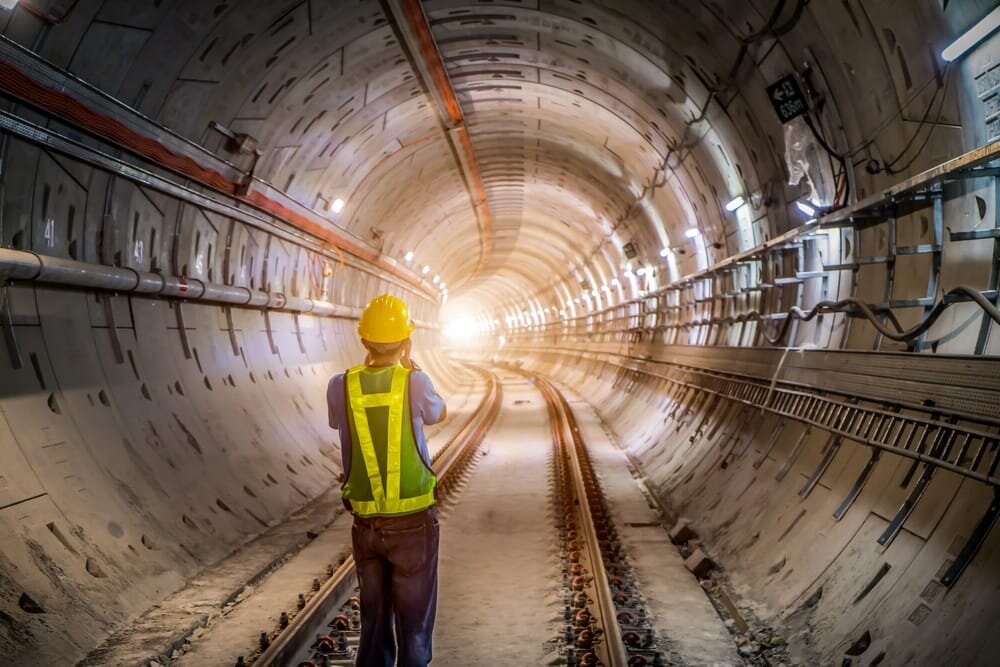~ The impact of building work vibrations on surrounding structures ~
Did you know that basement conversion is the most popular form of building expansion in London? This applies in both commercial and residential applications and is even growing in industrial projects, as unused ground space becomes a rarity. Here Robert Badcock, CEO of signal conditioning and wireless telemetry specialist Mantracourt, explains the biggest barriers to going underground — the impact of vibration and hydraulic pressure on surrounding structures.
When was the last time you saw a petrol station in central London. Never? That’s because you can’t build on top of it easily and you can’t build underneath it — full stop. To overcome the lack of ground space, not just in London, but in most major cities across the UK, more and more building contractors are opting for underground structures, but these don’t come without their own challenges.
Typically, when carrying out piling work, contractors will opt for one of two methods — they will drive metal sheets into the ground to hold the surrounding structures temporarily while excavation is carried out, or they will install a secant piled wall as a retaining structure and support system for deep foundations. The former comes with the risk of cracking the foundations of surrounding structures from excessive vibrations and the risk of affecting the connected services and utilities for nearby structures, which can happen as a result of damaging gas pipes, water mains and so on. While there’s no risk of vibration with a secant piled wall, you could still undermine surrounding structures by losing material into the hole you’re creating.
In underground excavation, hydraulic props are often used to support retained structures while the work is carried out. After being driven to a given load, they’re usually tested manually with a member of staff required to take a pressure reading by screwing a pressure gauge onto the hydraulic port after removing the cover cap. However, this can be extremely risky for both the person taking the reading and the structure itself. If the pressure gauge is screwed on incorrectly, it can cause a bleed in the hydraulic system, which would in turn deflate it and cause an uncontrolled unload of the system.

As an alternative, contractors can opt for a sensor-based system that offers continual monitoring of pressure and movement. Not only does this provide a safer alternative to manual tests, but it also offers stakeholders, such as local utilities providers, the peace of mind that the work is going to be carried out in a controlled manner with limited impact on their services or structures.
Mantracourt’s T24 wireless telemetry range is the ideal tool for enabling continuous, sensor-based monitoring. The T24 transmits a wide range of sensor outputs up to 800 metres, including data from industrial sensors measuring load, pressure, torque, strain, temperature and pulse. It has a battery life of up to five years and offers high accuracy measurement. The modules are fitted with efficient integral antennas to help overcome challenging environmental conditions, such as moving objects or high metallic settings. This is perfect for work within he construction sector, where the monitoring of pressure and vibration is common, and the importance of receiving a reliable signal is key.
The wireless nature of the product saves both time and cost compared to installing a wired counterpart, particularly in hard to reach locations where the cost of logistics and cabling would otherwise be high. It also offers low maintenance costs with reliable data collection for many years.

When coupled with Mantracourt’s cloud-based remote monitoring platform, SensorSpace, contractors and stakeholders can see live and historical data from any connected device, meaning that they can monitor the structure’s condition from anywhere, providing additional peace of mind to owners of surrounding infrastructure.
What’s surprising is that there is currently no industry standard or regulation to govern the monitoring of construction projects like this. In fact, we usually find that contractors source a system once work has already commenced onsite, meaning that they’re often looking for a quick turnaround. Luckily, Mantracourt’s T24 range is available off-the-shelf, meaning that it can be delivered within days.
While ground space across the UK continues to dwindle, it’s likely that the requirements for underground structures will continue to grow. In preparation, you can find out more about Mantracourt’s wireless telemetry range on its website. Alternatively, you can speak to a knowledgeable member of the team on +44 (0) 1395 234000.






